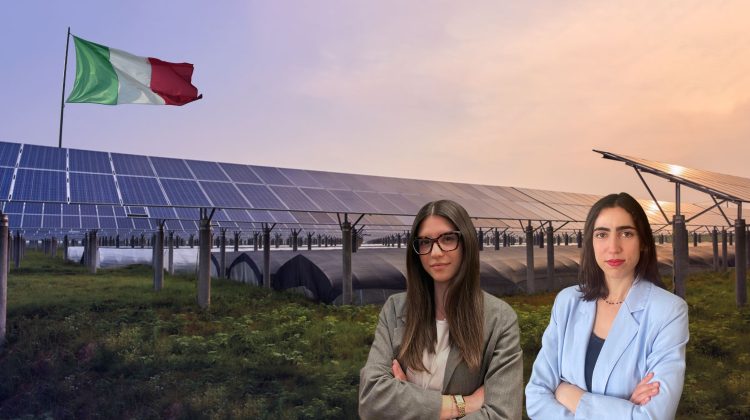Italy is reopening its call for agrivoltaic projects with the goal of reaching 1.05 GW of installed capacity and 1,300 GWh per year by June 30, 2026, but faces a critical obstacle: connection times to the national electricity grid. Although the auction represents a unique opportunity with remaining public funds, the administrative process threatens to slow down the projects’ progress.
“The main problem is that connection to the Italian grid must be completed by June 2026, but there are procedures that can extend the deadlines beyond what was provided for in the tender,” says Ludovica Terenzi, founder of Greensquare Italia, in an interview with Strategic Energy Europe.
The procedure involves requesting a connection from TERNA (and, for lower power plants, from E-Distribuzione), which can take up to 90 days to be released. Once received, developers have from 45 to 120 days to accept the conditions, which include costs and construction times, failing which the estimate will lapse. The required timelines for both the release of the estimate and the connection can greatly exceed the timeframes required by the public tender. “The infrastructure construction time necessary for the connection may be longer than the timeframe proposed in the auction, and this is a major concern,” Terenzi emphasizes.
Auction Expectations
Despite the challenges, the market views the reopening of the auction as a strategic opportunity. “Thanks to the new renewal of the deadlines, many companies that had been excluded can now participate due to the existence of surpluses,” notes Ludovica.
The Italian government has provided more than €1.098 billion in subsidies, covering up to 40% of eligible costs, in addition to a feed-in tariff for energy supplied to the grid.
“It is essential to organize contracts to create a solid foundation between energy and agricultural companies,” notes Terenzi, emphasizing the need for partnerships that guarantee the continuity of agricultural activity during the 20 years that the incentives last.
Regulations require that projects include the participation of an agricultural company or an association where one agricultural enterprise has a presence. This requirement encourages collaboration between sectors, although it also adds administrative complexity.“To access the incentives, it is mandatory to ensure that agricultural activity continues throughout the life of the project,” the executive emphasizes.
It’s worth noting that GSE (Energy Services Manager) awarded 1.5 GW of capacity in the first agrivoltaic auction held last December, which was well-attended with over 640 bids and a total of 1.7 GW.
Among the awarded projects are a 270 MW wind farm from European Energy, a 122 MW wind farm from Solarig, and a 55 MW wind farm from Photosol.
Challenges and Uncertainty for Investors
The complexity of the connection process is seen as one of the main factors of uncertainty for the financial sector. “Connection problems generate hesitation among investors when developing projects,” warns Terenzi.
Although the overall outlook is positive, the success of the auction will depend on the ability of the government and the relevant authorities to simplify procedures and offer clear guarantees.
Terenzi emphasizes that “accelerating connection times and creating specific contracts are key to the takeoff of agrivoltaics in Italy,” while Commisso insists on the need for a more defined regulatory environment to attract investment and ensure long-term viability.
An Evolving Regulatory Framework
From a legal perspective, Silvia Commisso, Legal Trainee at Greensquare Italia, explains that the development of agrivoltaics in Italy is governed by Legislative Decree 199/2021 and Ministerial Decree 436/2023, which promote experimental installations with innovative designs. These systems elevate solar panels and allow rotation, optimizing energy production without interfering with agricultural work, with a 30% increase in generation compared to traditional systems.
However, at Greensquare Italia, they emphasize that the regulatory framework still presents gray areas. “We take models from civil law and adapt them to the agrivoltaic sector, but there are uncertainties that should be specifically regulated,” explains Terenzi.
The specialist suggests that the Italian government should establish standard contracts that provide legal certainty to both energy operators and farmers. “It is important to create a specific agreement that allows electricity production and agricultural activity to coexist sustainably,” maintains.































